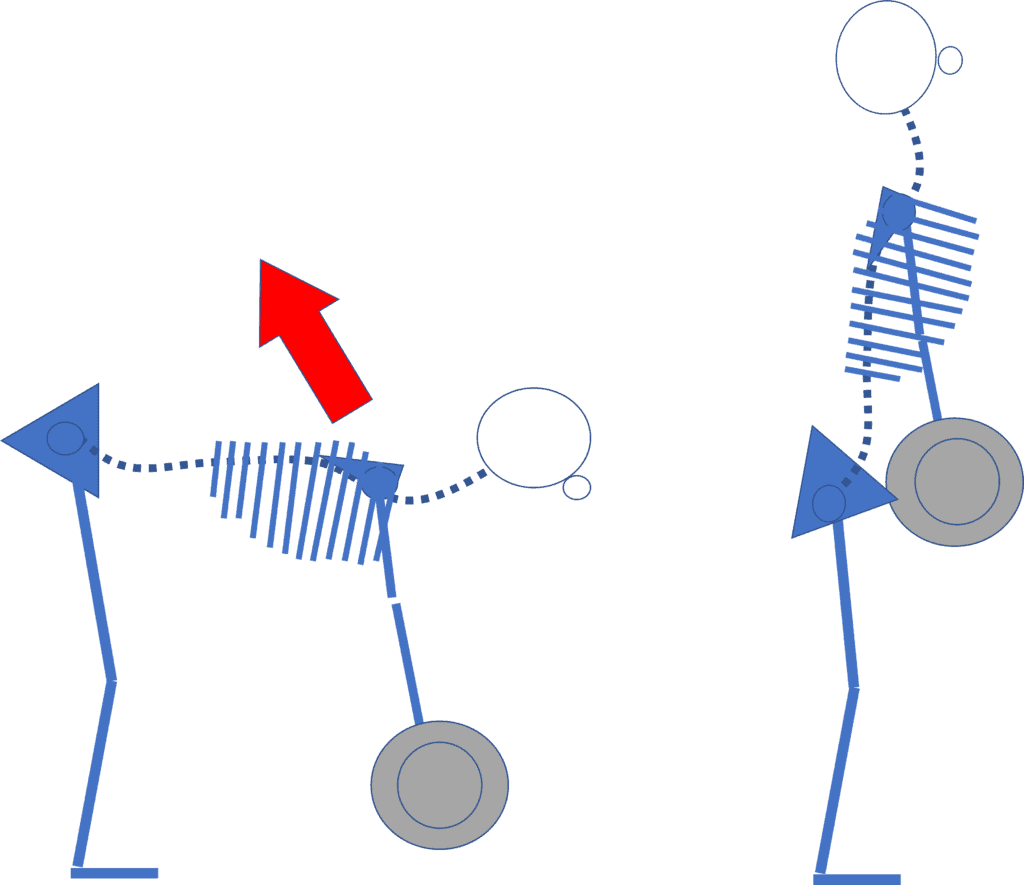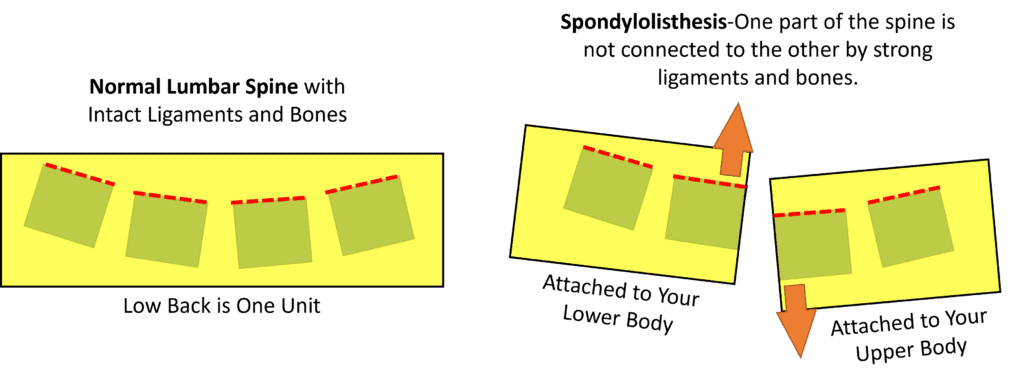Dead Lifts and Spondylolisthesis

If there is one exercise recommended by personal trainers that causes more back injuries than any other, it’s a deadlift. I have literally treated dozens of patients through the years who can track the start of a serious low back injury to this exercise. This week I saw two of these patients with one who has spondylolisthesis and wanted to continue the exercise. I had to explain to her that because of her condition, this exercise is contraindicated. This blog is being used to explain why that’s the case.
What is a Dead Lift?

A deadlift happens when the patient stands and bends over to lift weights directly from the floor. It is great for building strong glutes and core.
Performing this move correctly to protect your back isn’t trivial. Ideally, you want to keep a low back curve while you do this, but often that doesn’t happen. You also want this move to come from your hips with the muscle focus being on your glutes and not your low back. Where this move goes wrong is when there is too much focus on the weight being borne by the low back.
My Own Experience is Common
One morning many years ago, while working out with my trainer, I bent forward to pick up the weights while performing a deadlift. The small stabilizing muscle in my back hadn’t fully turned on yet and I felt a shift in my low back vertebrae and went to the floor. It took an x-ray-guided epidural later that morning to get me functional, as, before that injection, my back was so bad that it took 20 minutes just to climb one flight of stairs.
That experience of a shift happening in the low back while performing deadlifts is so common that I heard it yesterday from a new patient. I also heard yesterday from a different patient who also had spondylolisthesis that her back was flared up again and when I drilled into what she was doing, deadlifts came up. She felt this exercise was great for her core and glutes and while all of that can also be true, I tried to explain the biomechanics of why it was a bad idea for her. Let’s get into that below.
What is Spondylolisthesis?
Spondylolisthesis means that there is a lack of a physical connection between the spine bones and one slips forward on the other. There are two main types: acquired and congenital. There are also sub-types that depend on whether there is a fracture or lack of connection in the bone or if the ligaments and joints are damaged due to wear and tear. However, for our purposes here, all of these are the same, so I won’t confuse the discussion by trying to figure out which one of these you may have.

The bottom line concept is that in spondylolisthesis, two vertebrae in your back aren’t fully connected, which is the problem. When your low back is one unit as shown on the left above, from a bone and ligament standpoint, deadlifts can be done safely. However, when one segment of your spine isn’t connected by these elements, that creates what we see on the right. From a biomechanical standpoint, your spine is now in two separate units-one above and one below the spondylolisthesis.
The Biomechanics of Deadlifts and Spondylolisthesis

To understand more deeply how this all works, realize that the spine is stabilized by muscles and ligaments. Injuries typically happen when the muscles that stabilize one segment on the other called multifidus are offline. However, spondylolisthesis presents a different challenge, as it means that one segment in the spine isn’t connected. Take the examples above. On the left, the spine exists as one connected unit where all ligaments and bones are working as usual. On the right, the spine with spondylolisthesis is not fully connected by bones and/or ligaments. When the patient bends forward to pick up a weight from the floor, the upper part of that disconnected segment to the right is attached to the upper body. The lower part (to the left) is attached to the lower body. Hence adding load to the upper body (the weights being picked up from the floor) never fully gets transferred to the lower body. In fact, much of that force gets lost at the disconnected segment, potentially further damaging it.
What About Building Up the Core Muscles?
This is always a good idea. However, the deep stabilizing muscles called multifidus are almost always atrophied in these patients, hence they can’t be of much help. You could try to build up the bigger core muscles to help protect the spondylolisthesis and if you were doing normal activities that didn’t involve your upper body yanking on the disconnected part in flexion, then this would probably work to some degree. However, lifting a heavy weight from the floor while bent over, despite the additional core muscle strength is more likely than not to still pull way too much pressure on the spondylolisthesis site.
The upshot? If you have spondylolisthesis, deadlifts from the floor are NOT your friend. There however are lots of other ways to strengthen your core, so focus on those exercises!

NOTE: This blog post provides general information to help the reader better understand regenerative medicine, musculoskeletal health, and related subjects. All content provided in this blog, website, or any linked materials, including text, graphics, images, patient profiles, outcomes, and information, are not intended and should not be considered or used as a substitute for medical advice, diagnosis, or treatment. Please always consult with a professional and certified healthcare provider to discuss if a treatment is right for you.
